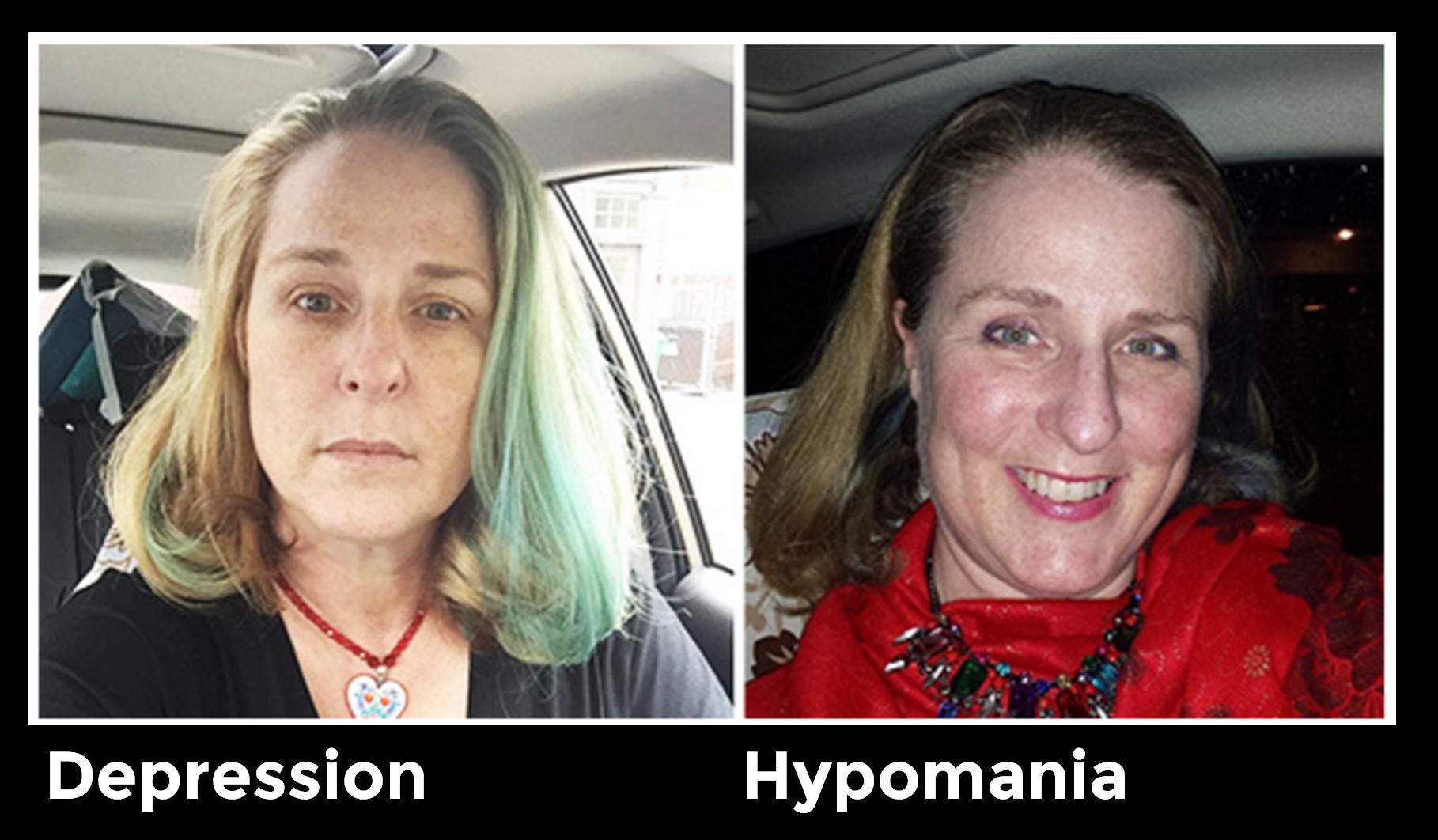Bipolar II
Bipolar II is not what it sounds like. When people say “bipolar” they usually mean Bipolar I, a mood disorder that causes extreme states of mania. People with Bipolar II never have mania. Instead, they cycle in and out of depression with rare states of elevated energy that sometimes feel good but more often make them anxious and irritable.
We know what causes those cycles, which are closely linked to the biological clock that regulates energy, sleep, motivation, and appetite. This clock, or circadian rhythm, is set by neurohormones like melatonin and cortisol, and anything that disrupts them tends to make mood worse. Clock disruptors include stress, sleep problems, seasonal changes, jet lag, changes in routines, puberty, and – for women – menses, menopause, and childbirth.
Come to think of it, a better term for this mood would be “Fragile Circadian Rhythm Disorder,” but we’re stuck with Bipolar II.
Depression happens a lot in Bipolar II, so much so that it is often confused with the more general type of depression, Major Depressive Disorder. But one thing sets Bipolar II apart.
In Bipolar II there’s an extra edge to the depression. Not all the time, but now and then it makes people irritable, agitated, or wired with anxious energy. This state of nervous excitation is called hypomania, which is Greek for “mild mania.”
Other signs of hypomania include racing thoughts, hyperactivity, elevated energy, impulsivity, and intense emotions that swing from happy to giddy to sad. Hypomania may feel good or may feel uncomfortable, but unlike mania it never causes people to completely lose control.
Mood swings and depression
Bipolar II affects everyone differently, but a common theme is that it causes mood and energy to shift up and down throughout life, starting in the teen years or even earlier. At first, the mood swings tend to be rapid. As people age, the shifts slow down and the depressions occur more often.
Other symptoms of Bipolar II
Mood impacts thoughts as much as emotions. People with Bipolar II are often misdiagnosed with Attention Deficit Hyperactivity disorder (ADHD) because the mood problem makes them distracted and restless. Their thoughts move too quickly or slowly and their mind feels crowded with multiple streams of thought.
These shifting thoughts make it difficult to set priorities. They may neglect important responsibilities while they hyperfocus on a single task, or shift from task to task in a disorganized way. Thoughts can come with a great intensity, which can be a source of inspiration or frustration. Hypomania makes people easily annoyed and quick to react. Small hassles become major obstacles and conflict with people often erupts.
Energy is usually elevated in hypomania. Sometimes this heightens creativity and productivity. Other times the surge makes people edgy and restless, and they may crave alcohol or drugs to settle them down. People in this state tend to sleep less. They may welcome this change or lie awake in an anxious state of insomnia.
Anxiety is one of the most common symptoms of hypomania. This may be felt physically as a restless nervousness or as an uncomfortable feeling of dread, as if something bad may happen at any moment. Usually the person cannot identify what they are afraid of. Often the anxiety intensifies in social settings, making other people seem hostile or mean-spirited. At the most extreme, full panic attacks occur.
Depression bothers the person who suffers from it, but hypomania is sometimes more troubling to friends and relatives. The impulsivity can cause people to spend too much money, crave substances, jump into new relationships or start projects they can’t finish.
Hypomania also has a positive side, making people friendly, confident, and outgoing. Their euphoric mood lifts the spirits of those around them. Others see them as inspiring, spontaneous, funny and generous. The problem is the body can’t maintain that state too long. After a few days, it turns to an edgy impatience, and then to anxiety, irritability, and depression.
How is Bipolar II disorder treated?
Depression is common in Bipolar II, but antidepressants do not work well for this kind of depression. Sometimes they can make mood worse. Mood stabilizers like lamotrigine and lithium address the underlying the underlying cycles that make people go in and out of depression in Bipolar II. Atypicals like cariprazine (Invega), lurisadone (Latuda), lumateperone (Caplyta), and quetiapine (Seroquel) bring rapid relief to bipolar depression.
Most of these treatments improve the health of the brain by protecting brain cells from the damaging effects of stress.
Therapy is usually a part of the recovery. It helps people both to cope with the effects Bipolar II has on their life and reduces the mood swings themselves. Therapy brings about biological changes that medications do not, stabilizing neurohormones that set the biological clock like cortisol and melatonin and reducing the inflammatory effects of stress and depression. Therapy is particularly good at reducing anxiety in Bipolar II.
"I was silly and giddy one minute, bursting with rage the next; running around excitedly in the afternoon but impossible to rouse out of bed in the morning.”

